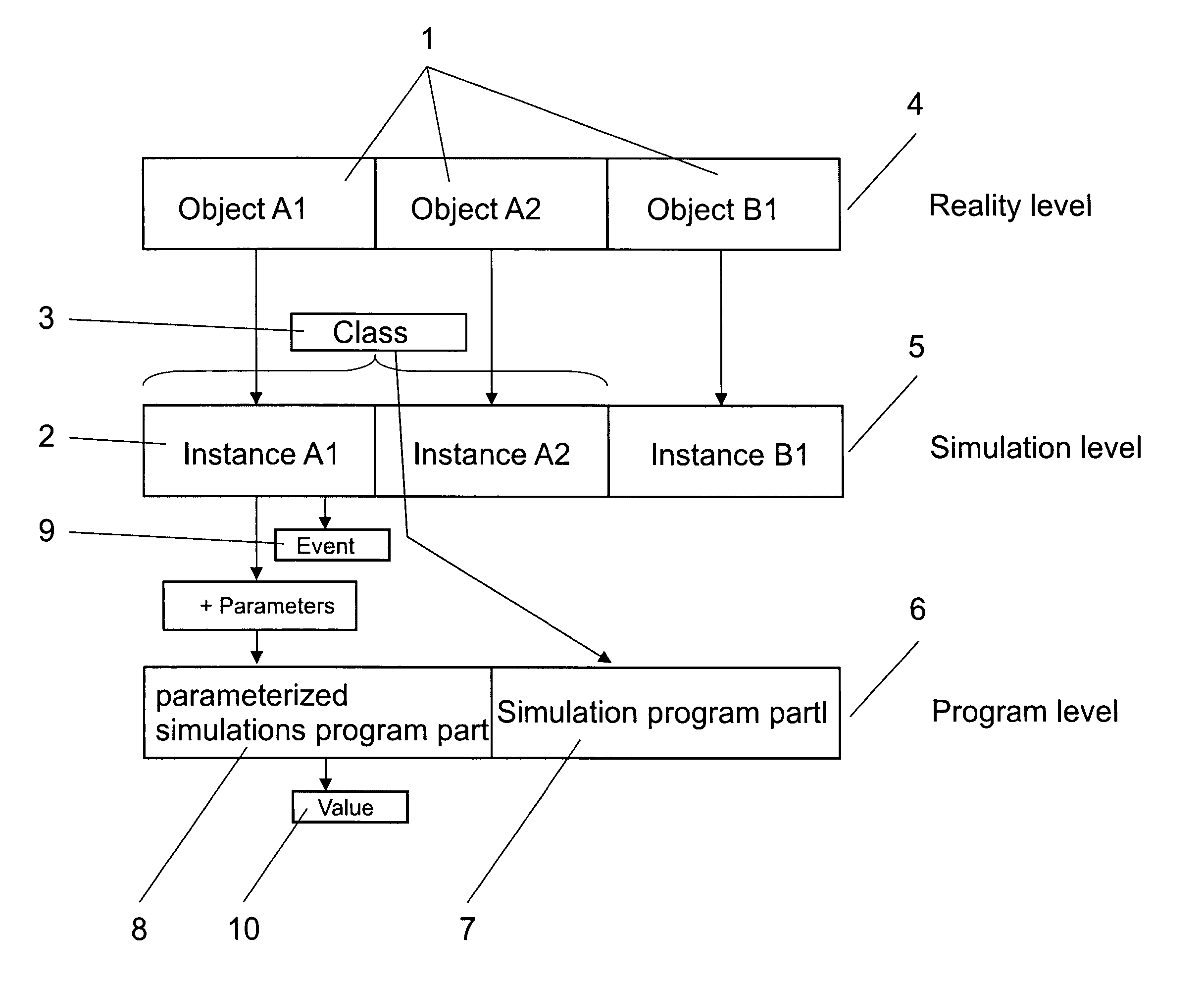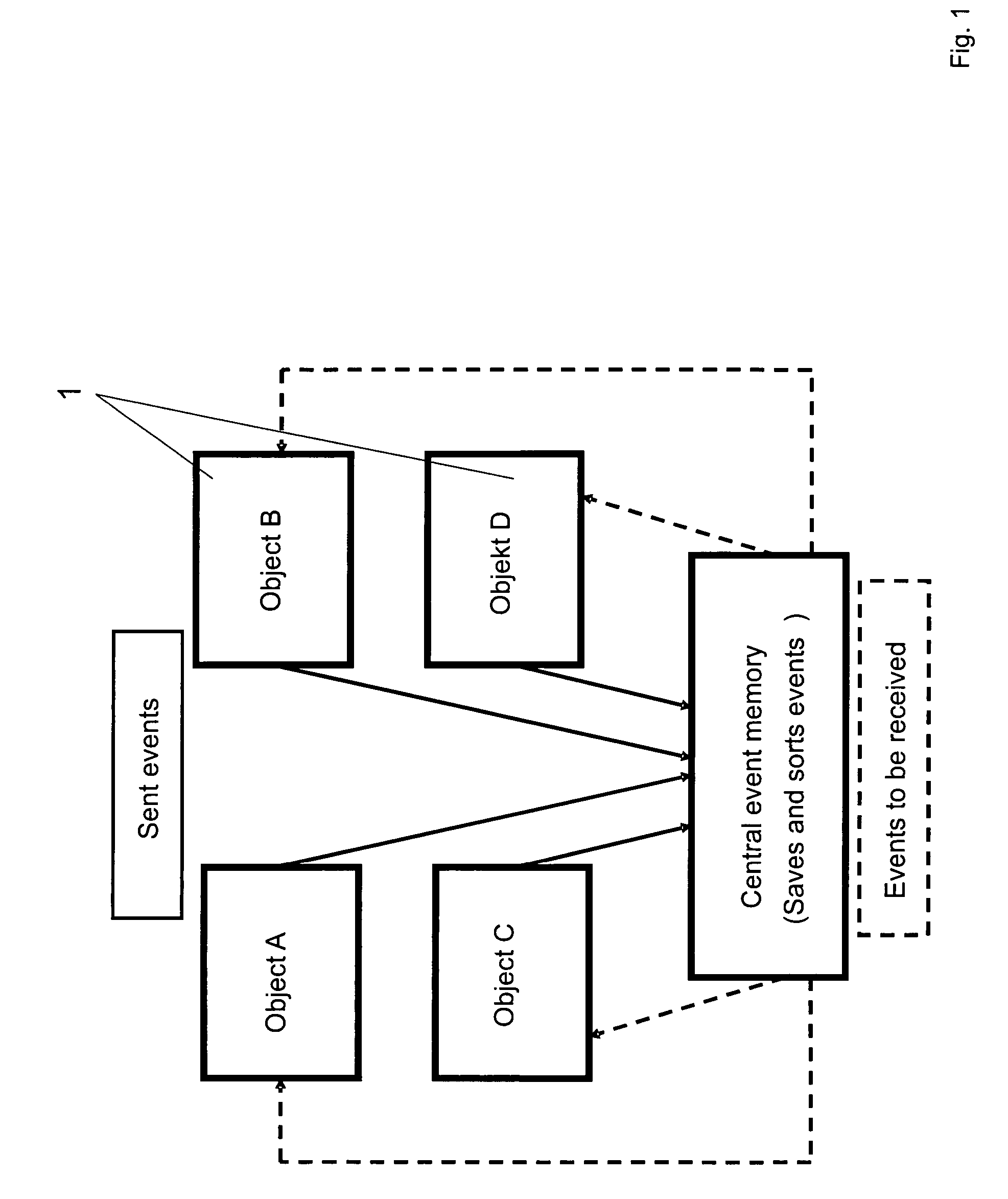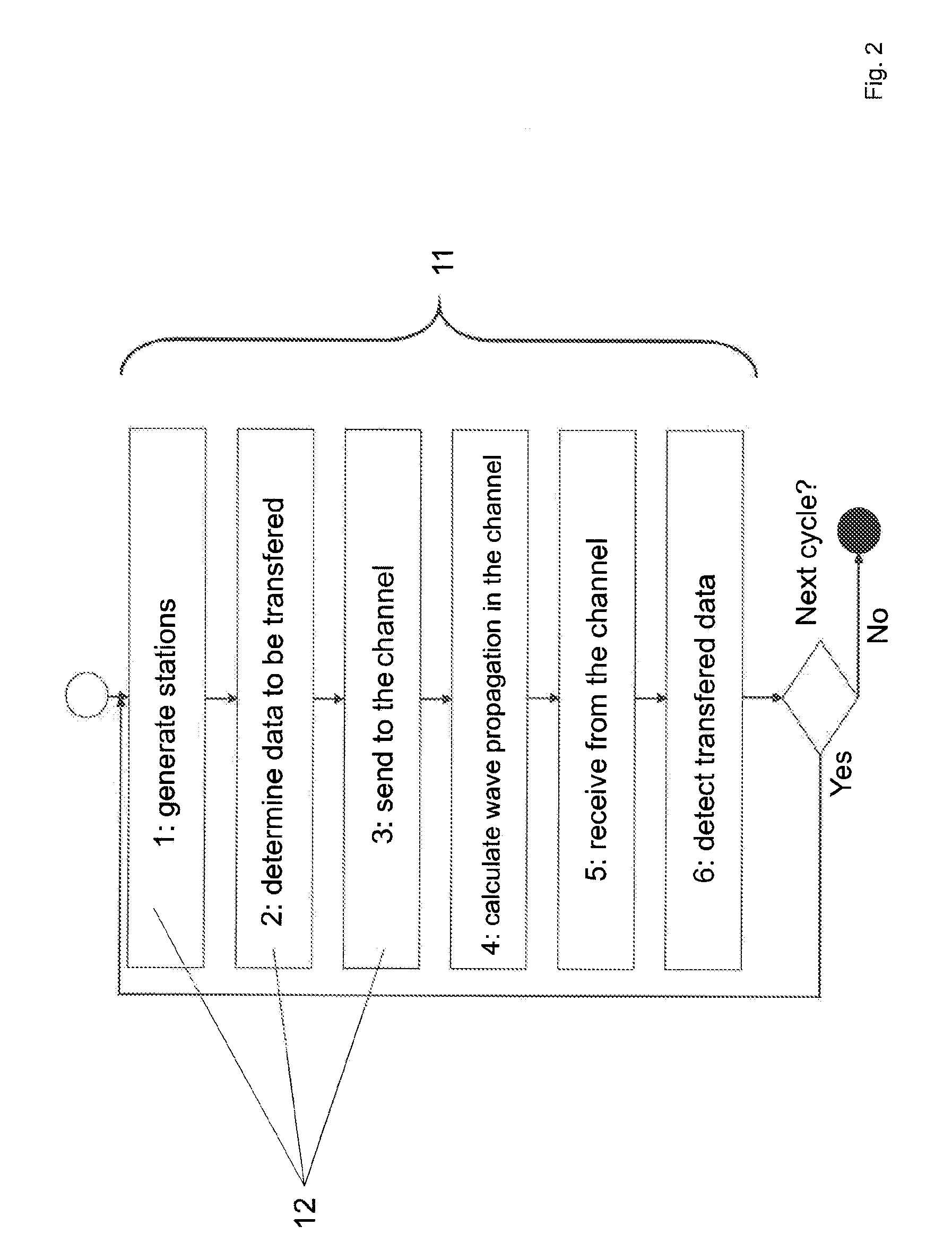Method for controlling sequential object-oriented system-simulations
a technology of object-oriented system and sequence control, applied in the direction of transmission, specific program execution arrangement, analog and hybrid computing, etc., can solve the problems of time-consuming and over-specification of models, and achieve the effect of faster simulation sequence and better utilization of computer resources
- Summary
- Abstract
- Description
- Claims
- Application Information
AI Technical Summary
Benefits of technology
Problems solved by technology
Method used
Image
Examples
embodiment example 2
[0066]In a further example, eight time slots of the duration 0.577 ms in a time frame of duration 4.615 ms are transferred in a GSM system. The cycle (11) given as an example in FIG. 2 can now, depending on the required time slot of the model to be simulated, be applied to each time slot or also to each time frame, in order to hence realize a simulation sequence control for time-discrete and object-oriented system simulations of the GSM mobile radio-communications system in accordance with the process corresponding to the invention. In this way, a time-discrete system simulation of a radio-communications access network according to the GSM mobile radio-communications standard can be controlled in the operational sequence with the process corresponding to the invention.
embodiment example 3
[0067]The following embodiments refer to the product “WiNeS-Wireless Network System Simulator” provided by Radioplan GmbH, Dresden.
[0068]An existing time-discrete and object-oriented system simulator for the UMTS mobile radio-communications network has been designed as a modular system such that its simulation sequence control can be exchanged. The simulation sequence control is therefore a component which is used by the part of the time-discrete and object-oriented system simulator for UMTS modeling the radio-communications access network. Two simulation sequence controls which can be used completely separately of each other exist. The first simulation sequence control implements a sequential process by means of discrete events corresponding to FIG. 1. This simulation sequence control is based on the public-domain tool Ptolemy II 1.0.1 of the University of Calif. at Berkley, USA (http:H / / Ptolemy.eecs.berkeley.edu) and is implemented in the programming language Java. A second simula...
embodiment example 4
[0073]The transmission of information via the WCDMA (wideband code division multiple access) air interface in the mobile radio-communications standard UTRAN / FDD (universal terrestrial radio access network / frequency division duplex) occurs in time frames with a duration of 10 ms, see for example (H. Holma and A. Toskala: WCDMA for UMTS, John Wiley & Sons., Chichester, UK, 2000, ISBN 0-471-72051-8). The process corresponding to the invention with the cycle (11) shown in FIG. 2 is in turn used for controlling the sequence of a time-discrete system simulation according to the UTRAN / FDD mobile radio communications standard.
[0074]Nevertheless, with a WCDMA air interface a rapid power control is indispensable for an efficient mode of operation of the air interface itself. See for example (H. Holma and A. Toskala: WCDMA for UMTS, John Wiley & Sons., Chichester, UK, 2000, ISBN 0-471-72051-8). This rapid power control works in UTRAN / FEDD 15 times faster than the change of time frames. In othe...
PUM
 Login to View More
Login to View More Abstract
Description
Claims
Application Information
 Login to View More
Login to View More - R&D
- Intellectual Property
- Life Sciences
- Materials
- Tech Scout
- Unparalleled Data Quality
- Higher Quality Content
- 60% Fewer Hallucinations
Browse by: Latest US Patents, China's latest patents, Technical Efficacy Thesaurus, Application Domain, Technology Topic, Popular Technical Reports.
© 2025 PatSnap. All rights reserved.Legal|Privacy policy|Modern Slavery Act Transparency Statement|Sitemap|About US| Contact US: help@patsnap.com



